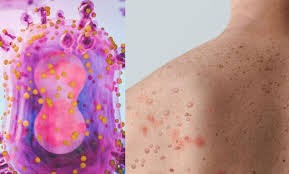
Introduction
Monkeypox, a rare viral disease, has garnered significant attention due to recent outbreaks in various parts of the world. Though it was primarily confined to Central and West Africa, the virus has crossed borders, raising global health concerns. Understanding the causes, transmission, and preventive measures is essential in managing this disease and curbing its spread.
History of Monkeypox
Monkeypox is caused by the monkeypox virus, a member of the Orthopoxvirus genus, which also includes the smallpox virus. Though the symptoms are similar to smallpox, monkeypox is generally less severe. The disease was first discovered in laboratory monkeys in 1958, hence the name, but it primarily affects rodents and other animals. Human cases were first identified in the Democratic Republic of the Congo in 1970.
Symptoms
The symptoms of mpox are similar to, but milder than, smallpox. They typically appear within 5 to 21 days after exposure and include:
– Fever
– Headache
– Muscle aches
– Backache
– Swollen lymph nodes
– Chills
– Exhaustion
– A rash that often starts on the face before spreading to other parts of the body, eventually forming scabs.
Prevention and Control
Preventing the spread of monkeypox requires a multi-faceted approach:
- Vaccination: The smallpox vaccine has been found to be about 85% effective in preventing monkeypox. In response to recent outbreaks, some countries have started offering the smallpox vaccine to at-risk populations.
- Isolation and Contact Tracing: Infected individuals should be isolated to prevent the spread of the virus. Close contacts of confirmed cases should be monitored for symptoms and may be offered the vaccine.
- Public Health Messaging: Awareness campaigns about the symptoms of monkeypox and how it spreads are crucial in helping people protect themselves. This includes educating the public about avoiding contact with wild animals and practicing good hygiene.
- Safe Handling of Contaminated Materials: Those caring for infected individuals should use personal protective equipment (PPE) and handle contaminated materials, such as bedding and clothing, with care.
- Travel Restrictions and Monitoring: In areas where outbreaks are occurring, travel restrictions or advisories may be implemented to prevent the spread of the virus.
The monkeypox outbreak serves as a reminder of the importance of vigilance in global health. While the disease is not as contagious or deadly as smallpox, its spread beyond endemic regions highlights the need for coordinated international efforts in disease surveillance, vaccination, and public health preparedness. By taking appropriate preventive measures, the spread of monkeypox can be contained, protecting vulnerable populations and preventing a more widespread outbreak
#MpoxAwareness #VirusPrevention #StayInformed #HealthMatters #PublicHealthSafety Google Health Weird Diseases




1 Comment
Excellent work!